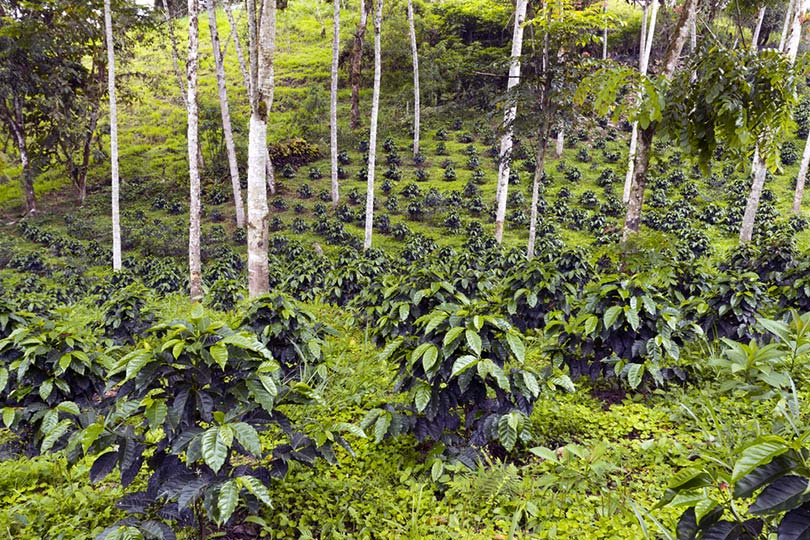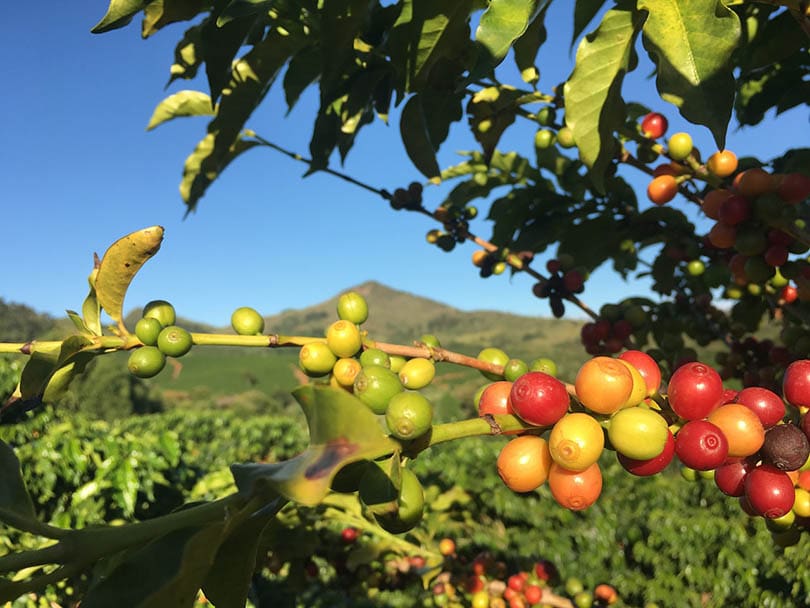
When you order a coffee or buy your favorite beans, do you often wonder where the beans come from? Sure, you have most likely heard the terms Arabica and Robusta. You may have even bought coffee at your local market and were told or read about the flavors you should expect to be inside. But have you ever seen a label or heard mention of shade-grown coffee?
In the coffee world, the best-tasting beans are expected to be those grown in the shade. Why? It’s the way nature intended the plants to grow. When you purchase beans or buy a cup of Arabica coffee, that’s what you’re getting, shade-grown coffee. But what does it all mean for the coffee industry and the goodness in your cup each morning?

Life Before the Coffee Industry
Before all of us fell in love with coffee, it grew naturally in areas such as Madagascar, Tanzania, Ethiopia, and Cameroon. These plants grew deep within the forest under a canopy of trees and plants. When grown in their natural habitat, coffee plants get the nutrients they need from the rich soil and are naturally fertilized thanks to the trees and plants growing around them. Before the demand took over, this was the way most coffee beans were grown and harvested. Farmers were able to give the plants time to produce naturally, which made for higher-quality beans.

What Does “Shade-Grown” Mean?
As we mentioned above, shade-grown coffee is simply coffee that is raised the way it was intended by nature. With the intervention of farmers who use coffee plants as a way of life, the process of raising these plants may have changed slightly, but that doesn’t mean farmers have given up on tradition. In most instances, you’ll find that farmers of true shade-grown Arabica beans respect the ecological system around them. While they may have large farms of plants, they try to maintain standards that are best for the quality of their beans and for the rainforest they depend on for their livelihoods.
What Is Sun-Grown Coffee?
Sun-grown coffee is Robusta beans that are picked from plants grown while exposed to sunlight. These coffee plants were designed to answer the high demand the coffee industry faced. While direct sunlight isn’t the way nature intended coffee to grow, it can still be done.
How does sun-grown coffee hurt the environment?
Unfortunately, it’s quite common for these coffee beans to be inferior and harder on the environment. Due to the mass production issue, large amounts of rainforest have been lost to the production of these plants. It’s also common for fertilizers, which can be harmful to the ecosystem, to be used to help these coffee plants grow in an unnatural setting.

Which Beans Taste Better?
Arabica beans are the most popular of the two coffee beans. While most of these are shade-grown that doesn’t mean each farm follows the natural way of growing and harvesting. When you have an Arabica bean that is truly shade-grown, you’ll notice the difference. The slower process makes the flavor more pronounced, smooth, and enjoyable. This means these beans are not only better for the environment but great in your cup.
Robusta beans, or sun-grown coffee, are slightly less tasty than Arabica. Many enjoy this coffee bean for its earthy flavor and nutty aftertaste. The main issue with Robusta coffee, however, is the bitterness. Due to it being grown in the sun, this is quite noticeable in comparison to shade-grown coffees.
Why Is Shade-Grown Coffee Better for the Environment?
You may be wondering why you should drink shade-grown coffee. In short, shade-grown coffee is better for the environment. These beans are grown in a way that doesn’t harm the rainforest while still allowing farmers to succeed. Shade-grown coffee plants live longer than those exposed to direct sunlight. They also help support the ecosystem they are such an intricate part of. If you want great-tasting coffee that doesn’t damage the environment in which it’s grown, shade-grown is your best option.

In Conclusion
As you can see, the term shade-grown coffee is self-explanatory. Coffee plants are grown in their natural habitat of shade, with little sun exposure to produce an excellent bean for your cup. If you want to do your part and give back to the home of your favorite beverage, seeking shade-grown coffee is a great place to start.
Featured Image Credit: Dr Morley Read, Shutterstock















